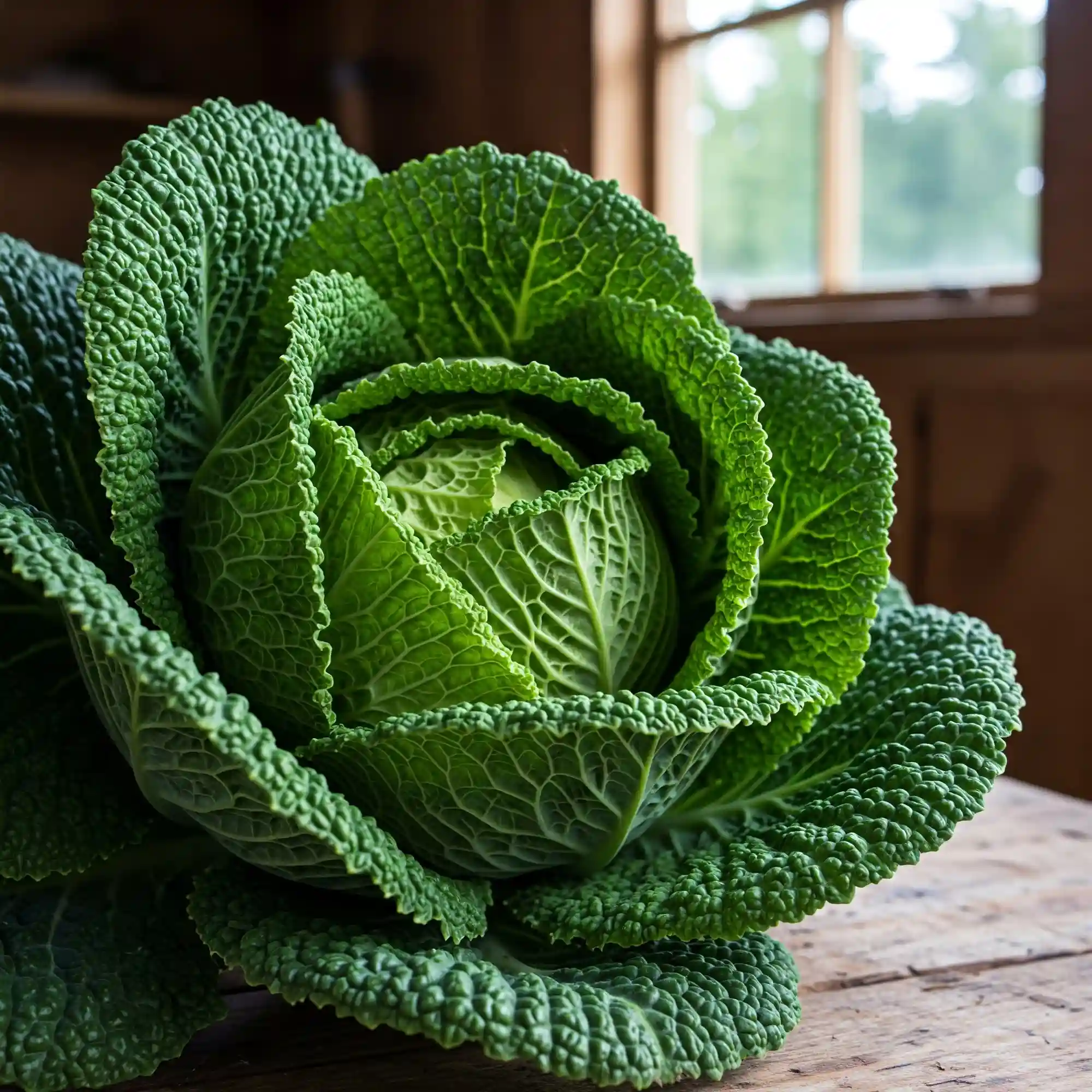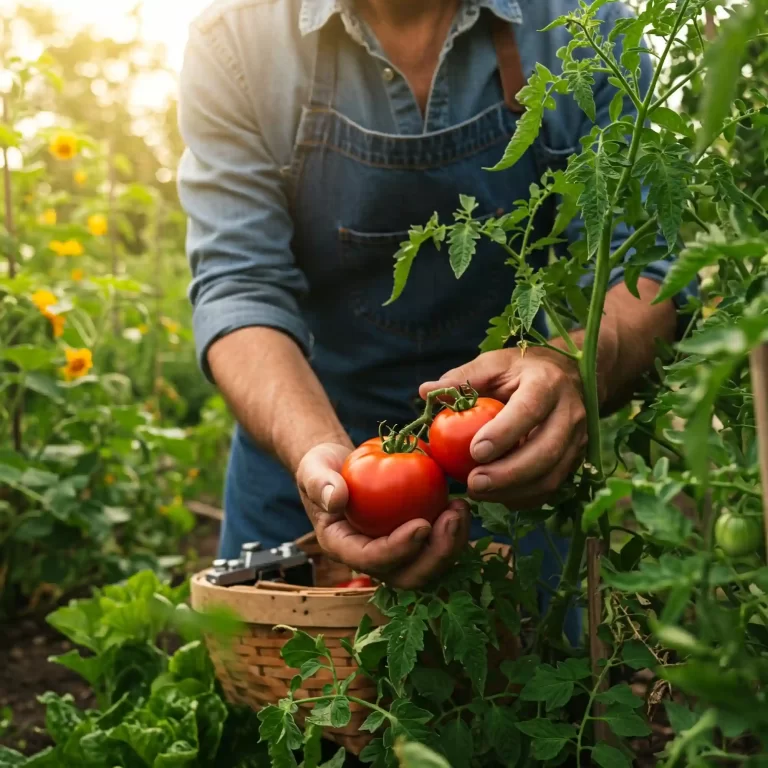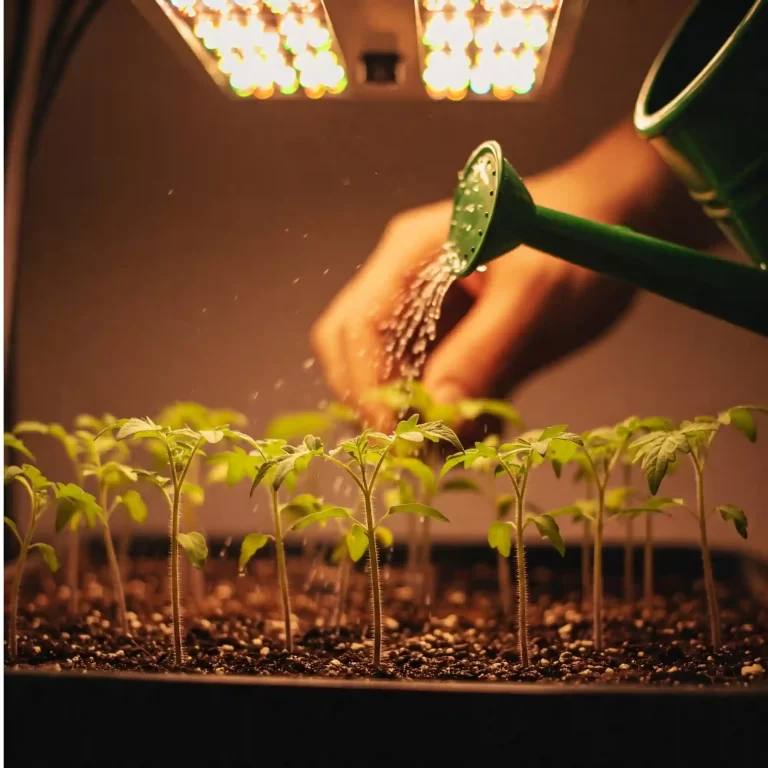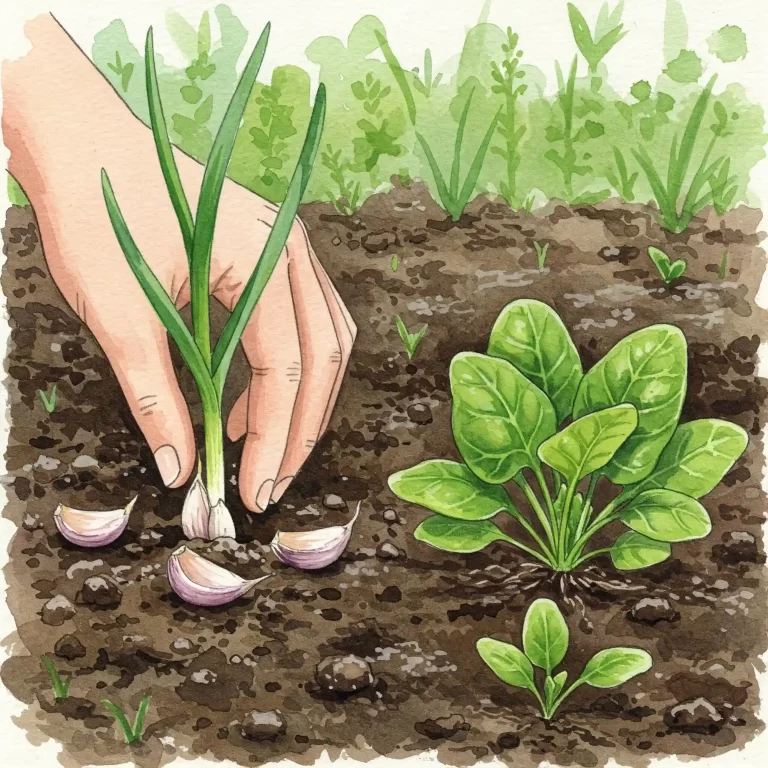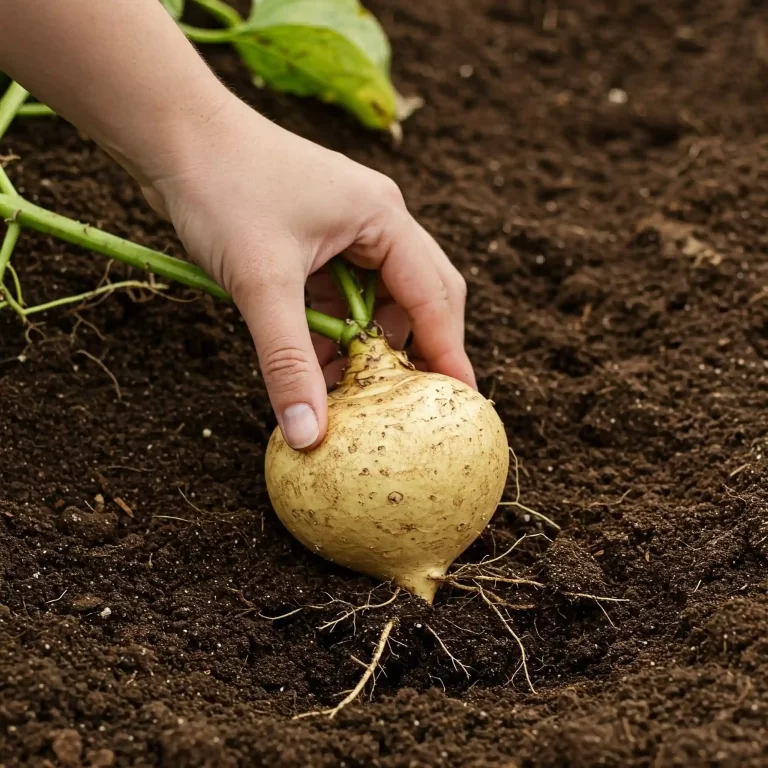Have you ever dreamt of growing your own crisp, crinkly Savoy cabbage? It’s easier than you might think! This guide breaks down everything you need to know about growing Savoy cabbage, from seed to table. Whether you’re a seasoned gardener or just starting out, I’ll walk you through each step, ensuring a successful and rewarding harvest. Let’s dive into the world of growing this unique and delicious vegetable.
How to Grow Savoy Cabbage: A Step-by-Step Guide
Savoy cabbage (Brassica oleracea var. sabauda) stands out from other cabbages with its distinctive crinkled or puckered leaves. This unique texture not only adds visual appeal to your garden but also contributes to a more tender and flavorful eating experience. You’ll find it has a milder, sweeter taste compared to the common green cabbage. As a gardener, I appreciate how its beautiful texture can add interest to my garden.
Key Characteristics of Savoy Cabbage:
- Crinkled Leaves: The most defining feature.
- Loose Head: Compared to tighter-headed varieties.
- Milder Flavor: Sweeter and less pungent than green cabbage.
- Nutritional Value: Rich in vitamins C and K, fiber, and antioxidants.
Why choose Savoy cabbage over other varieties? I’ve found it to be more versatile in the kitchen. Its tender leaves are excellent for salads, stir-fries, and even light cooking methods like steaming or sautéing, where other cabbages might become tough. Plus, its unique texture adds visual interest to any dish.
Popular Savoy Cabbage Varieties:
| Variety | Maturity (Days) | Head Size | Characteristics |
| Savoy King | 85 | Large | Deep green, tightly packed heads, good for storage. |
| Melissa | 75 | Medium | Compact heads, good for smaller gardens. |
| Famosa | 90 | Large | Upright plant, resistant to splitting. |
| Winter King | 100 | Large | Excellent cold hardiness, good for late harvests. |
Choosing the right variety depends on your climate, available space, and desired harvest time. You should consider your growing season and the amount of space you have available.
Did you know? Savoy cabbage originated in the Savoy region of Italy, hence its name. This historical tidbit always adds a touch of charm to my gardening experience.
Growing Savoy Cabbage: Important Considerations
Before we dive into the steps of growing Savoy cabbage, let’s consider some crucial factors that will influence your success.
- Climate: Savoy cabbage thrives in cool weather. It prefers temperatures between 60-70°F (15-21°C). It can tolerate light frost, making it a good choice for fall and winter gardens in many regions.
- Soil: Well-draining soil rich in organic matter is essential. The ideal pH range is 6.0-7.0. I recommend amending your soil with compost or well-rotted manure before planting.
- Sunlight: Savoy cabbage needs at least 6 hours of sunlight per day. Choose a location in your garden that receives full sun.
Understanding these basics will set you up for success in growing healthy and productive Savoy cabbage.
Benefits of Growing Your Own Savoy Cabbage:
- Freshness: You can harvest your cabbage at peak ripeness.
- Flavor: Homegrown Savoy cabbage tastes significantly better than store-bought.
- Cost Savings: Growing your own produce can save you money.
- Gardening Satisfaction: The joy of nurturing a plant from seed to harvest is unparalleled.
I’ve found that growing my own Savoy cabbage not only provides me with fresh, delicious produce but also connects me more deeply with nature. It’s a rewarding experience that I highly recommend you try.
Starting Your Savoy Cabbage Journey: Seeds and Seedlings
Starting your Savoy cabbage journey with healthy seeds and seedlings is essential for a successful harvest. Here’s what I’ve learned about this crucial stage:
When to Start Seeds:
The timing of starting your Savoy cabbage seeds depends on your local climate and growing season. In general, you can start seeds indoors 6-8 weeks before the last expected frost in your area. If you have a long growing season, you can also direct sow seeds into the garden in late spring or early summer for a fall harvest.
How to Sow Savoy Cabbage Seeds:
- Choose a seed starting mix: I recommend using a fine-textured seed starting mix that’s well-draining and moisture-retentive.
- Fill your containers: You can use seed starting trays, small pots, or even recycled containers with drainage holes.
- Sow the seeds: Sow seeds about ¼ inch deep and gently cover them with the seed starting mix.
- Water gently: Use a spray bottle or a gentle stream of water to moisten the soil without disturbing the seeds.
- Provide warmth and light: Keep the seeds in a warm location (around 70-75°F or 21-24°C) and provide plenty of light, either from a sunny windowsill or grow lights.
Caring for Seedlings:
Once your Savoy cabbage seeds have germinated, it’s important to provide them with the right conditions to grow into healthy seedlings.
- Light: Seedlings need plenty of light to prevent them from becoming leggy. If you’re using a windowsill, make sure it receives at least 6 hours of direct sunlight per day. If you’re using grow lights, keep them on for 14-16 hours per day.
- Watering: Keep the soil moist but not soggy. Water gently when the top inch of soil feels dry to the touch.
- Temperature: Maintain a temperature of around 65-70°F (18-21°C) for optimal growth.
- Fertilizing: Once the seedlings have developed their first true leaves, you can start fertilizing them with a diluted liquid fertilizer.
Hardening Off Seedlings:
Before transplanting your Savoy cabbage seedlings into the garden, it’s important to harden them off. This process gradually acclimates them to the outdoor conditions and helps them avoid transplant shock.
- Start 1-2 weeks before transplanting: Place the seedlings outdoors in a sheltered location for a few hours each day, gradually increasing the amount of time they spend outside.
- Protect from extreme conditions: Protect the seedlings from strong winds, direct sunlight, and frost.
- Reduce watering: Gradually reduce watering frequency as the seedlings acclimate to the outdoor conditions.
By following these steps, you can ensure that your Savoy cabbage seedlings are strong and healthy, ready to thrive in your garden.
Planting Your Savoy Cabbage Outdoors: Finding the Perfect Spot
Now that your Savoy cabbage seedlings are strong and healthy, it’s time to plant them outdoors. Choosing the right location and preparing the garden bed are crucial for their success. Here’s what I’ve learned from my experience:
Choosing the Right Location:
- Sunlight: Savoy cabbage thrives in full sun, meaning it needs at least 6 hours of direct sunlight per day. Choose a location in your garden that receives plenty of sunlight throughout the day.
- Soil: As I mentioned earlier, well-draining soil rich in organic matter is essential. Avoid planting in areas with heavy clay soil or poor drainage.
- Space: Savoy cabbage plants need adequate space to grow and develop their heads. Space the seedlings 18-24 inches apart to allow for proper air circulation and prevent overcrowding.
Preparing the Garden Bed:
- Clear the area: Remove any weeds, rocks, or debris from the planting area.
- Amend the soil: If your soil is lacking in organic matter, amend it with compost, well-rotted manure, or other organic amendments. This will improve soil drainage, fertility, and water retention.
- Test the soil pH: Savoy cabbage prefers a soil pH between 6.0 and 7.0. You can test your soil pH using a home test kit or by sending a soil sample to a local lab. If your soil pH is too acidic, you can add lime to raise it. If it’s too alkaline, you can add sulfur to lower it.
- Create planting holes: Dig holes that are slightly larger than the root balls of your seedlings.
How to Plant Savoy Cabbage Seedlings:
- Gently remove seedlings from their containers: Handle the seedlings carefully to avoid damaging their delicate roots.
- Place seedlings in the holes: Position the seedlings in the holes so that the top of the root ball is level with the soil surface.
- Fill in the holes: Gently fill in the holes with soil, firming it around the base of the seedlings.
- Water thoroughly: Water the seedlings well after planting to help them settle into their new home.
Additional Tips for Planting Savoy Cabbage:
- Plant on a cloudy day or in the late afternoon: This will help reduce transplant shock.
- Water regularly after planting: Keep the soil consistently moist but not soggy.
- Mulch around the plants: This will help retain moisture, suppress weeds, and regulate soil temperature.
By following these steps, you can provide your Savoy cabbage seedlings with the best possible start in your garden. With proper care, they’ll grow into healthy and productive plants, providing you with a bountiful harvest of delicious Savoy cabbage.
Nurturing Your Savoy Cabbage: Ongoing Care
Once your Savoy cabbage seedlings are settled into their new home, consistent care is key to ensuring a bountiful harvest. Here’s how I nurture my Savoy cabbage plants:
Watering Savoy Cabbage:
- Frequency: Savoy cabbage needs consistent moisture to thrive. I aim to water deeply about once or twice a week, depending on the weather conditions. You can check the soil moisture by inserting your finger about an inch into the soil. If it feels dry, it’s time to water.
- Methods: I prefer to water at the base of the plant, avoiding wetting the leaves as much as possible. This helps prevent fungal diseases. Soaker hoses or drip irrigation can be very effective.
- Important Note: During hot, dry periods, you may need to water more frequently. Conversely, during periods of heavy rain, you may need to reduce watering to prevent waterlogging.
Fertilizing Savoy Cabbage:
- Types of Fertilizer: Savoy cabbage is a heavy feeder, meaning it benefits from regular fertilization. I recommend using a balanced organic fertilizer, such as compost tea or well-rotted manure. You can also use a commercial fertilizer with a balanced NPK ratio (nitrogen, phosphorus, potassium).
- Application Schedule: I typically fertilize my Savoy cabbage plants every 2-3 weeks during the growing season. Follow the instructions on your chosen fertilizer for proper application rates.
Weed Control:
- Mulching: Applying a layer of organic mulch, such as straw or wood chips, around your Savoy cabbage plants can help suppress weeds, retain moisture, and regulate soil temperature.
- Hand Weeding: Regularly hand weeding around your plants is also important to prevent weeds from competing for nutrients and water.
Additional Tips for Nurturing Savoy Cabbage:
- Monitor for Pests and Diseases: Regularly inspect your plants for signs of pests or diseases. Addressing issues early can prevent them from becoming serious problems.
- Provide Support: As your Savoy cabbage heads grow larger, they may need some support to prevent them from toppling over. You can use stakes or cages to provide support.
- Practice Crop Rotation: Avoid planting Savoy cabbage in the same location year after year. Rotating crops can help prevent soilborne diseases and pests.
By following these nurturing tips, you can help your Savoy cabbage plants thrive and produce a bountiful harvest of delicious, homegrown cabbage.
Protecting Your Savoy Cabbage: Pests and Diseases
Even with the best care, your Savoy cabbage plants might encounter some unwelcome guests or health issues. Here’s how I deal with common pests and diseases:
Common Savoy Cabbage Pests:
- Cabbage Worms: These green caterpillars can quickly devour your cabbage leaves. I often handpick them off the plants or use Bacillus thuringiensis (Bt), a natural bacteria that targets caterpillars.
- Aphids: These small insects suck plant sap, weakening the plant. A strong spray of water or insecticidal soap can help control them.
- Slugs and Snails: These pests can chew holes in leaves. I use beer traps or copper tape to deter them.
Organic Pest Control Methods:
- Companion Planting: Planting herbs like rosemary or thyme near your cabbage can help repel some pests.
- Natural Sprays: Neem oil or garlic spray can be effective against many common cabbage pests.
- Row Covers: These lightweight covers can physically protect your plants from pests.
Common Savoy Cabbage Diseases:
- Clubroot: This soilborne disease causes stunted growth and swollen roots. I prevent it by practicing crop rotation and ensuring good soil drainage.
- Blackleg: This fungal disease can cause dark lesions on stems and leaves. I avoid it by using disease-free seeds and practicing good sanitation.
Disease Prevention Strategies:
- Crop Rotation: Rotating your crops each year can help prevent soilborne diseases from building up.
- Soil Health: Healthy soil is less susceptible to disease. Amend your soil with compost and ensure good drainage.
- Sanitation: Remove any infected plant debris from your garden to prevent the spread of disease.
By staying vigilant and taking proactive measures, you can protect your Savoy cabbage plants from pests and diseases, ensuring a healthy and abundant harvest.
Harvesting Your Savoy Cabbage: The Fruits of Your Labor
After all your hard work and dedication, the moment you’ve been waiting for has arrived: harvesting your Savoy cabbage! Here’s how I know when it’s time and the best way to bring in the crop:
When to Harvest Savoy Cabbage:
- Firm Heads: The most reliable sign of maturity is a firm, solid head. When you gently squeeze the cabbage, it should feel dense and compact.
- Head Size: The size of the head will vary depending on the variety you’re growing, but generally, you can harvest when the head reaches a good size for your needs.
- Time of Year: Savoy cabbage is typically harvested in the fall or early winter, depending on when you planted it.
How to Harvest Savoy Cabbage:
- Use a Sharp Knife: I recommend using a sharp knife to ensure a clean cut.
- Cut at the Base: Cut the cabbage head at the base of the plant, just above the outer leaves.
- Remove Outer Leaves: You can remove any loose or damaged outer leaves.
Storing Harvested Savoy Cabbage:
- Refrigeration: Savoy cabbage can be stored in the refrigerator for several weeks. I wrap it in a plastic bag or store it in a crisper drawer to maintain its freshness.
- Preservation Methods: You can also preserve Savoy cabbage by pickling or fermenting it.
Additional Tips for Harvesting and Storing:
- Harvest in the Morning: Harvesting in the morning, after the dew has dried, can help prevent fungal diseases.
- Handle with Care: Savoy cabbage leaves are delicate, so handle the heads with care to avoid bruising.
- Don’t Wash Before Storing: Avoid washing the cabbage before storing it, as this can promote decay.
Harvesting your own Savoy cabbage is a truly rewarding experience. The crisp, fresh flavor of homegrown cabbage is unmatched, and you’ll have the satisfaction of knowing you grew it yourself.
Companion Planting for Savoy Cabbage: Boosting Your Harvest
Companion planting is a fantastic way to enhance the growth and health of your Savoy cabbage while also creating a more diverse and vibrant garden. By strategically planting certain species together, you can deter pests, attract beneficial insects, and even improve the flavor of your cabbage. Here are some of my favorite companion plants for Savoy cabbage:
Beneficial Companion Plants for Savoy Cabbage:
- Thyme: This fragrant herb repels cabbage white butterflies, which can lay eggs that hatch into cabbage worms.
- Rosemary: Another aromatic herb that deters cabbage moths and other pests.
- Marigolds: These cheerful flowers repel nematodes and other soil pests.
- Nasturtiums: These edible flowers attract aphids away from your cabbage.
- Dill: This herb attracts beneficial insects like ladybugs and hoverflies, which prey on aphids.
- Onions and Garlic: These pungent vegetables deter many pests, including aphids and cabbage root flies.
- Legumes (e.g., clover, peas): These plants fix nitrogen in the soil, which can benefit cabbage growth.
Plants to Avoid Planting Near Savoy Cabbage:
- Strawberries: These plants can attract slugs and snails, which can also damage cabbage.
- Tomatoes: These plants can stunt the growth of cabbage.
- Other Brassicas (e.g., broccoli, cauliflower): Planting other brassicas near Savoy cabbage can increase the risk of pest and disease problems.
Tips for Companion Planting:
- Consider Growth Habits: Choose companion plants that won’t compete with your cabbage for sunlight, water, or nutrients.
- Attract Beneficial Insects: Select companion plants that attract beneficial insects to help control pests naturally.
- Create a Diverse Garden: A diverse garden is a healthy garden. Companion planting can help create a more balanced ecosystem in your garden.
By incorporating companion planting into your Savoy cabbage growing strategy, you can create a thriving garden that is both beautiful and productive.
Troubleshooting Common Savoy Cabbage Growing Problems
Even with careful planning and diligent care, you might encounter some challenges while growing Savoy cabbage. Here are some common problems I’ve faced and how I’ve tackled them:
Bolting (Premature Flowering):
- Problem: Savoy cabbage is a cool-season crop, and if it experiences a sudden temperature fluctuation or prolonged warm weather, it can bolt, meaning it prematurely sends up a flower stalk and goes to seed. This makes the head loose and less palatable.
- Solution: To prevent bolting, plant your Savoy cabbage at the appropriate time for your region, ensuring it has enough time to mature before hot weather arrives. Consistent watering and mulching can also help regulate soil temperature and prevent bolting.
Small Heads:
- Problem: Several factors can contribute to small heads, including insufficient sunlight, lack of nutrients, overcrowding, or water stress.
- Solution: Ensure your Savoy cabbage plants receive at least 6 hours of sunlight per day. Amend the soil with compost or well-rotted manure before planting and fertilize regularly during the growing season. Space your plants adequately to prevent overcrowding and water consistently, especially during dry periods.
Pest Infestations:
- Problem: As discussed earlier, pests like cabbage worms, aphids, and slugs can damage your Savoy cabbage plants.
- Solution: Regularly inspect your plants for signs of pests and take appropriate action. Handpicking pests, using natural sprays, or employing companion planting can help control pest populations.
Disease Outbreaks:
- Problem: Diseases like clubroot and blackleg can affect Savoy cabbage.
- Solution: Practice crop rotation, ensure good soil drainage, and use disease-free seeds to prevent disease outbreaks. If you encounter diseased plants, remove them promptly to prevent the spread of disease.
Additional Tips for Troubleshooting:
- Monitor Your Plants Regularly: Regularly inspecting your plants can help you identify problems early on, making them easier to address.
- Adjust Your Care as Needed: Be prepared to adjust your watering, fertilizing, or pest control strategies based on the specific needs of your plants and the environmental conditions.
- Don’t Be Afraid to Experiment: Gardening is a learning process, and sometimes you need to experiment to find what works best for you and your garden.
By being aware of these common problems and their solutions, you can overcome challenges and enjoy a successful Savoy cabbage harvest.
FAQ: Your Savoy Cabbage Questions Answered
I’ve compiled a list of frequently asked questions about growing Savoy cabbage, drawing from my own experience and the questions I often receive from fellow gardeners:
How to grow organic Savoy cabbage in raised beds?
Growing organic Savoy cabbage in raised beds is a great way to improve drainage, soil quality, and accessibility. I recommend filling your raised beds with a mix of compost, well-rotted manure, and topsoil. When planting, space your seedlings appropriately and water regularly. To prevent pests and diseases organically, consider companion planting with herbs like rosemary and thyme, and use natural pest control methods like handpicking or neem oil sprays.
How to grow Savoy cabbage from seed indoors in pots?
Starting Savoy cabbage from seed indoors gives you a head start on the growing season. I use seed starting trays or small pots filled with a seed starting mix. Sow the seeds about ¼ inch deep and keep the soil moist but not soggy. Once the seedlings have developed their first true leaves, you can transplant them into larger pots. Before transplanting them outdoors, be sure to harden them off gradually.
Best way to grow Savoy cabbage in hot summer climates?
Growing Savoy cabbage in hot summer climates can be challenging, but it’s not impossible. I recommend planting your Savoy cabbage in late summer or early fall for a winter harvest. Choose a location that receives some afternoon shade to protect the plants from the intense heat. Consistent watering and mulching are also crucial to keep the soil cool and moist.
How to grow Savoy cabbage to prevent cabbage white butterflies?
Cabbage white butterflies can be a nuisance for Savoy cabbage growers, as their caterpillars (cabbage worms) can quickly devour the leaves. I’ve found that using row covers is an effective way to prevent these butterflies from laying their eggs on your plants. You can also handpick any caterpillars you find or use Bacillus thuringiensis (Bt), a natural bacteria that targets caterpillars.
How long does it take to grow Savoy cabbage?
The time it takes to grow Savoy cabbage from seed to harvest varies depending on the variety and growing conditions. In general, it takes about 70-100 days. Starting seeds indoors can shorten the time to harvest.
What is the best time to grow Savoy cabbage in my region?
The best time to grow Savoy cabbage depends on your local climate and growing season. In general, Savoy cabbage is a cool-season crop that thrives in temperatures between 60-70°F (15-21°C). In most regions, you can plant Savoy cabbage in the spring for a summer harvest or in the late summer or early fall for a winter harvest. I recommend checking your local planting calendar for specific dates.
By addressing these common questions, I hope to provide you with the information you need to successfully grow Savoy cabbage in your garden.
Conclusion: Enjoying the Rewards of Your Savoy Cabbage Harvest
Growing your own Savoy cabbage is a rewarding experience that provides you with fresh, delicious produce right from your backyard. By following the steps and tips outlined in this guide, you can successfully cultivate this unique and flavorful vegetable.
Remember, consistent care and attention are key to a bountiful harvest. From starting seeds indoors to protecting your plants from pests and diseases, each stage of the growing process plays a vital role in the final outcome.
So, get your hands dirty, embrace the joys of gardening, and savor the fruits (or rather, vegetables) of your labor. With a little patience and effort, you’ll be enjoying homegrown Savoy cabbage in no time!
